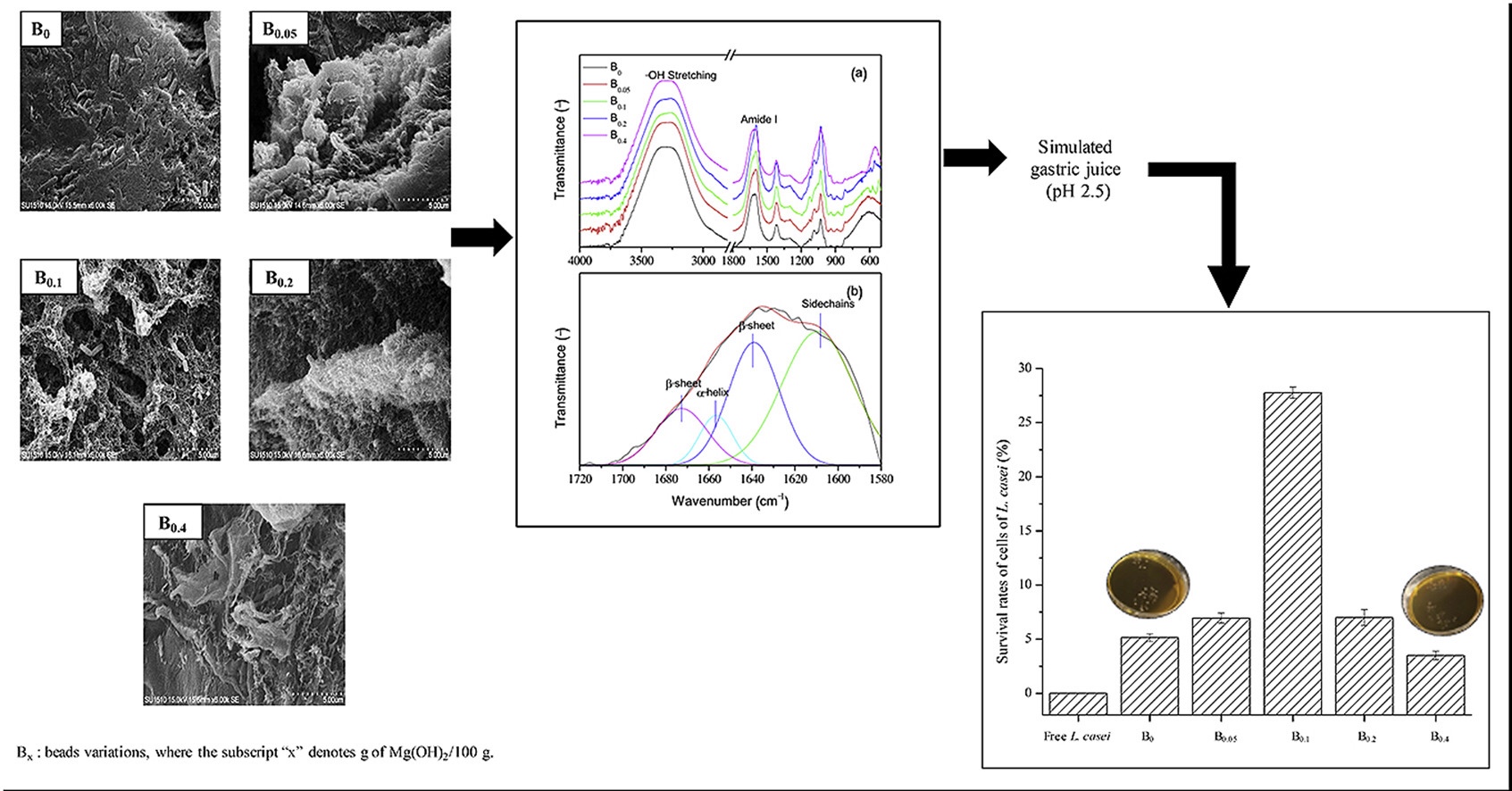Calcium alginate beads

Calcium alginate beads loaded with Mg(OH)2 improve L. casei viability under simulated gastric condition
Alginate beads are commonly used for protection of probiotics against adverse environmental conditions. However, alginate beads are unable to provide complete cell viability under stringent gastric pH conditions.
This work considered the incorporation of Mg(OH)2 particles in the formulation of alginate beads to enhance the viability of L. casei under gastric conditions. To this end, alginic acid solution (0.5 g/100 g) was added with different concentrations (0.0, 0.05, 0.1, 0.2 and 0.4 g/100 g alginate) of Mg(OH)2 and a cell load of 10.56 ± 0.1 log CFU/g of L. casei. The beads were formed by dripping one part of the respective former suspensions into ten parts of 0.68 mol/L CaCl2 solution. SEM analysis showed that L. casei cells were effectively entrapped in the beads. FTIR analysis indicated that high Mg(OH)2 concentrations induced unfolding of cell proteins risking the viability of the probiotics.
The latter suggests that while Mg(OH)2 is able to increase the pH within the beads respect the pH of the external environment, a suitable concentration should be determined where protein unfolding is reduced or hindered. L. casei viability analysis showed that a concentration of about 0.1 g Mg(OH)2/100 g alginate maximized the cell count under simulated gastric condition. More on calcium alginate beads

